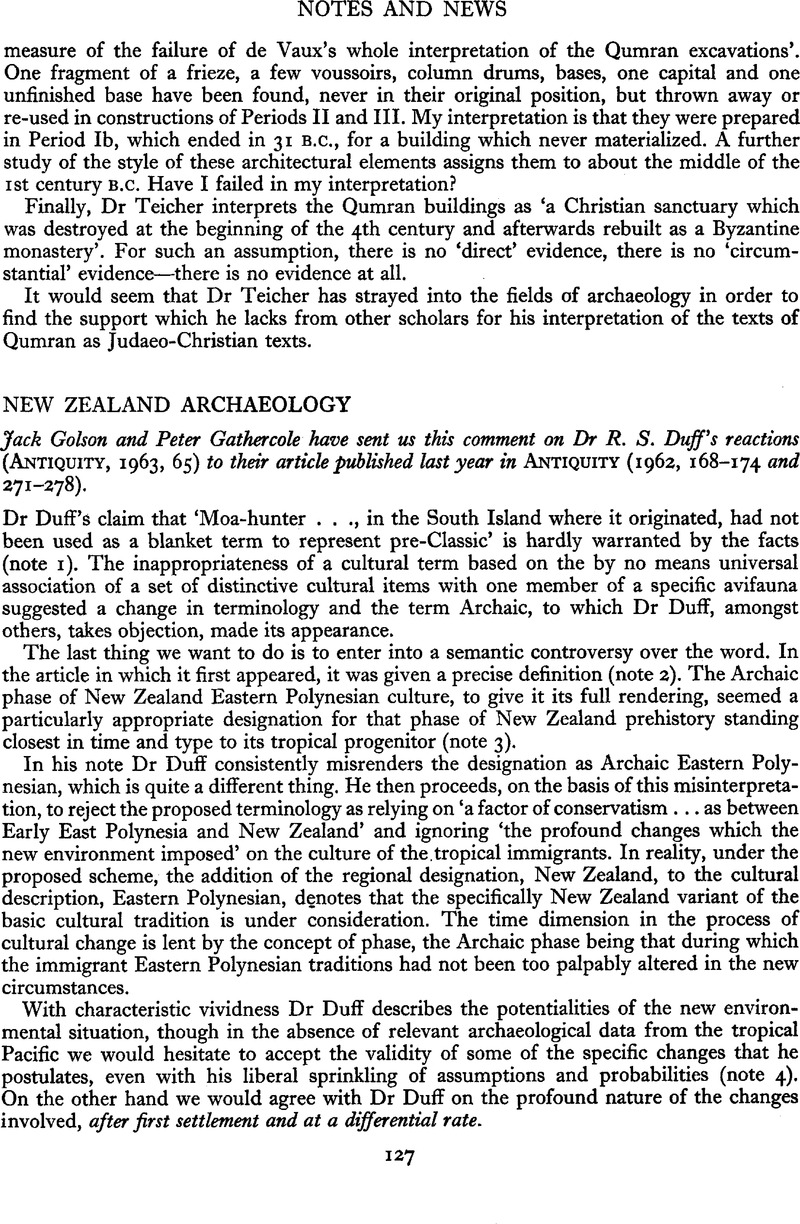No CrossRef data available.
Published online by Cambridge University Press: 02 January 2015

(1) See, for example, Duff, R. S., The Moahunter Period of Maori Culture (Wellington), 1956, 13 Google Scholar.
(2) Golson, J., ‘Culture Change in Prehistoric New Zealand’. In Freeman, J. D., and Geddes, W. R., eds., Anthropology in the South Seas, New Plymouth (1959)Google Scholar.
(3) Archaic is used in a similar way, that is with no implication of conservatism or antiquatedness, in American prehistory ( Willey, G. R., and P., Phillips, 1958. Method and Theory in American Archaeology, Chicago University Press, pp, 104–143)Google Scholar, in Greek art history ( Enciclopedia dell’ Arte Antica, vol. 1, p. 537 Google Scholar, S.V. Arcaico), and in Chinese language studies ( Karlgren, B., 1940. ‘Grammata Serica’. Bulletin of the Museum of Far Eastern Antiquities, 12, 3 ff.Google Scholar, and references).
(4) To select one example from many, it would be a bold man indeed who would assert the invention in New Zealand of the barbed ‘bird-spear’ point, in view of the association with it in the New Zealand Archaic of the harpoon and the occurrence of both types in the North Pacific (Leroi-Gourhan’s harpon mâle and harpon femelle).
(5) Golson, J., ‘L’Archéologie du Pacifique Sud: Résultats et Perspectives.’ Journal de la Société des Océanistes, 1959, 50–51.Google Scholar